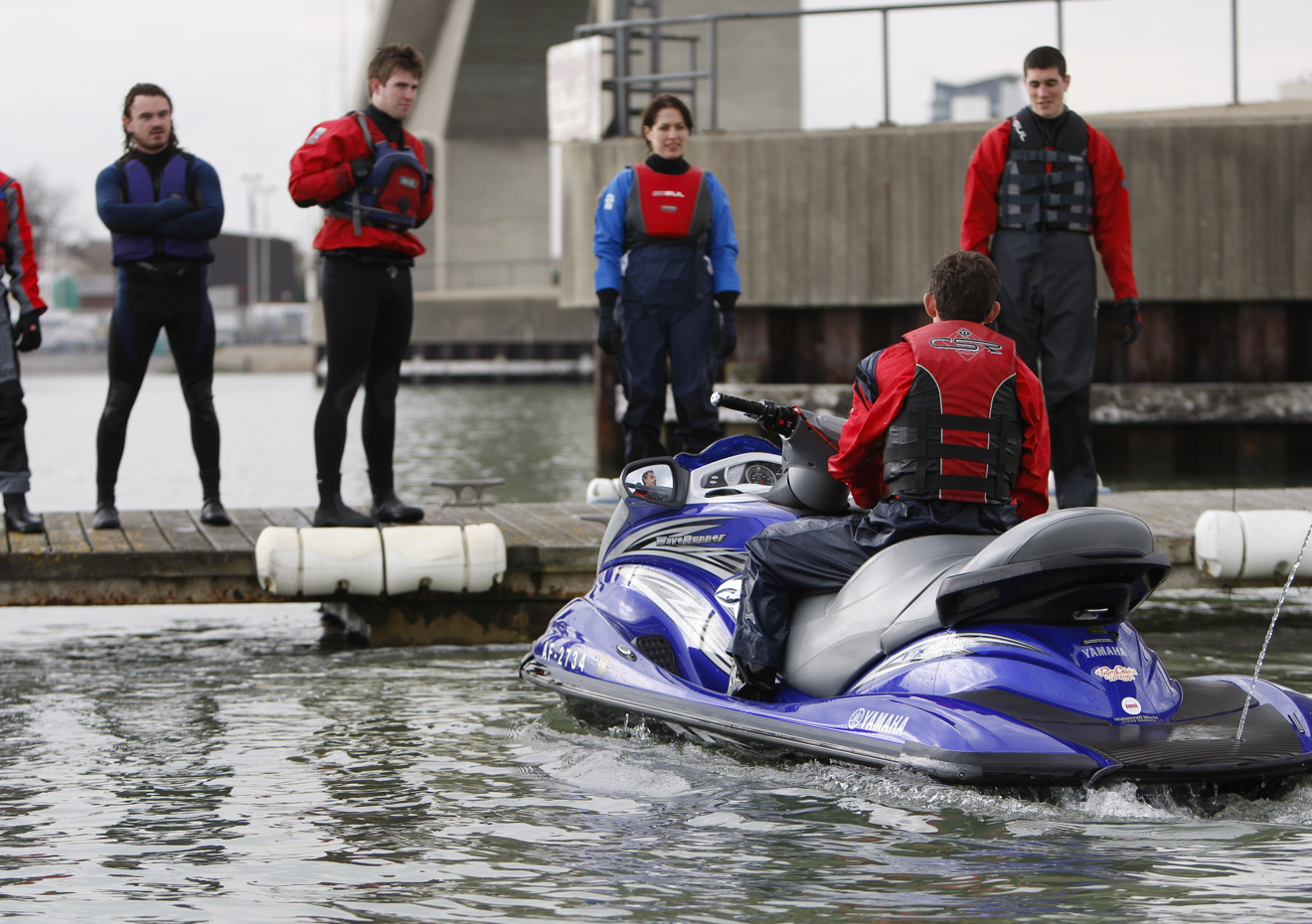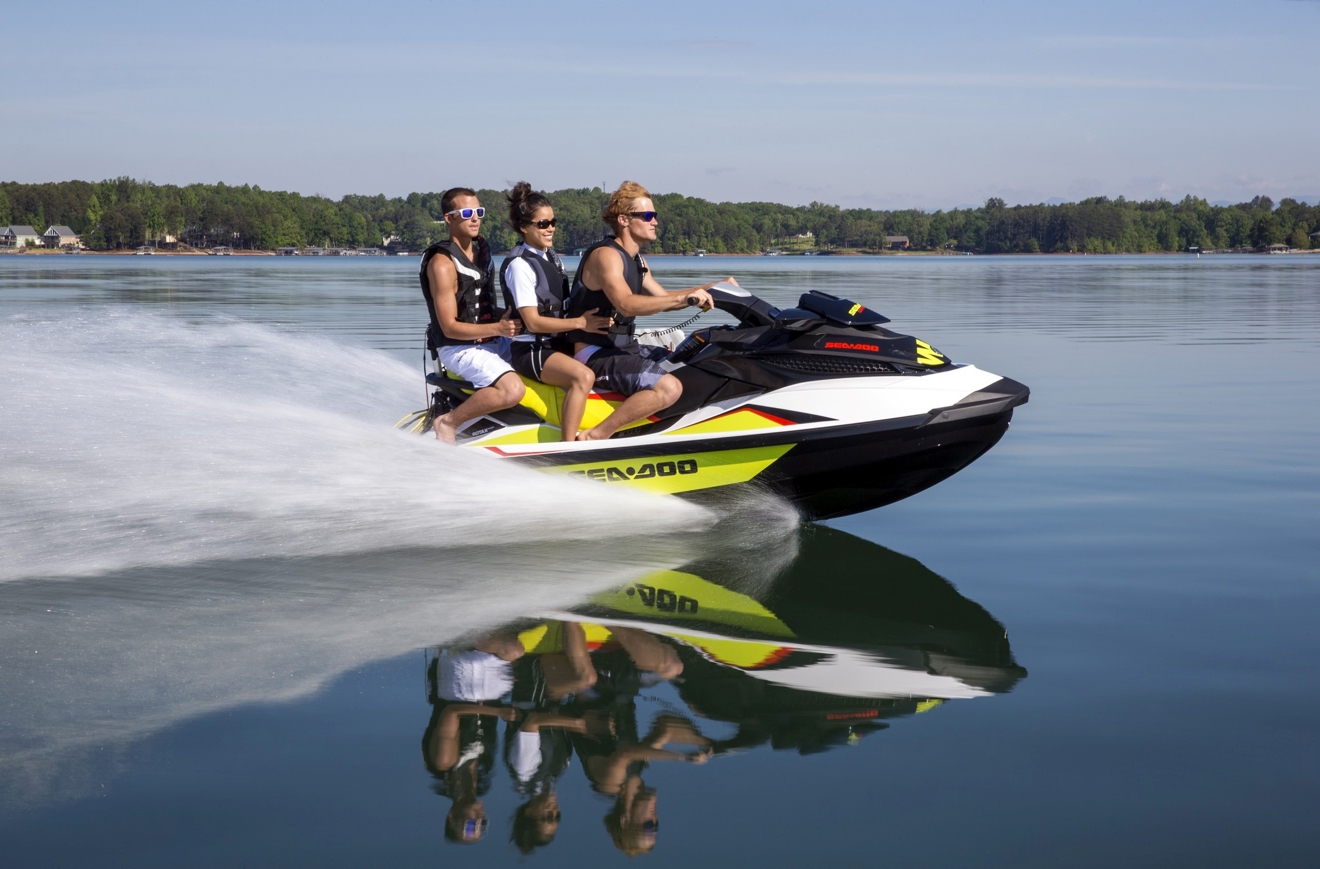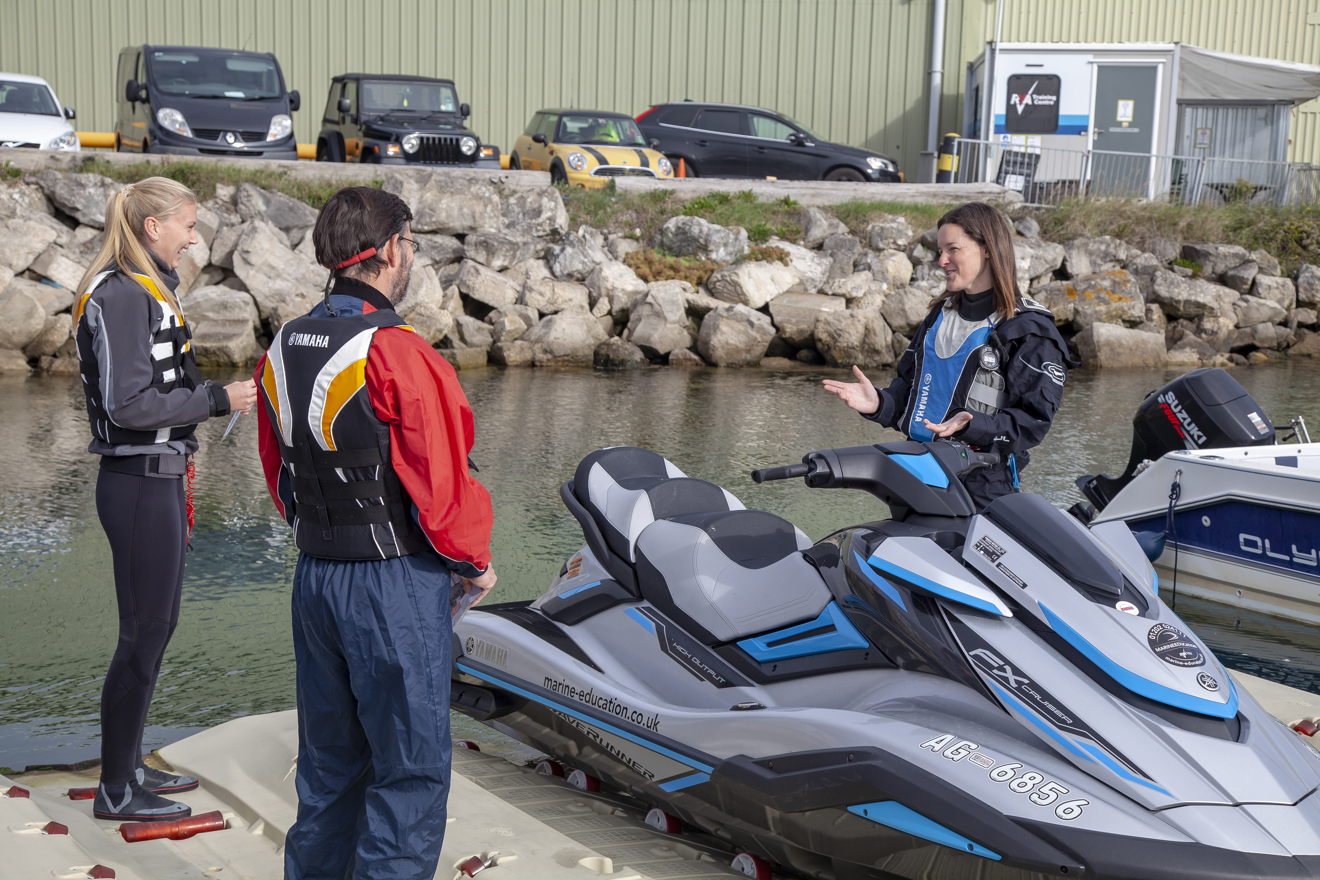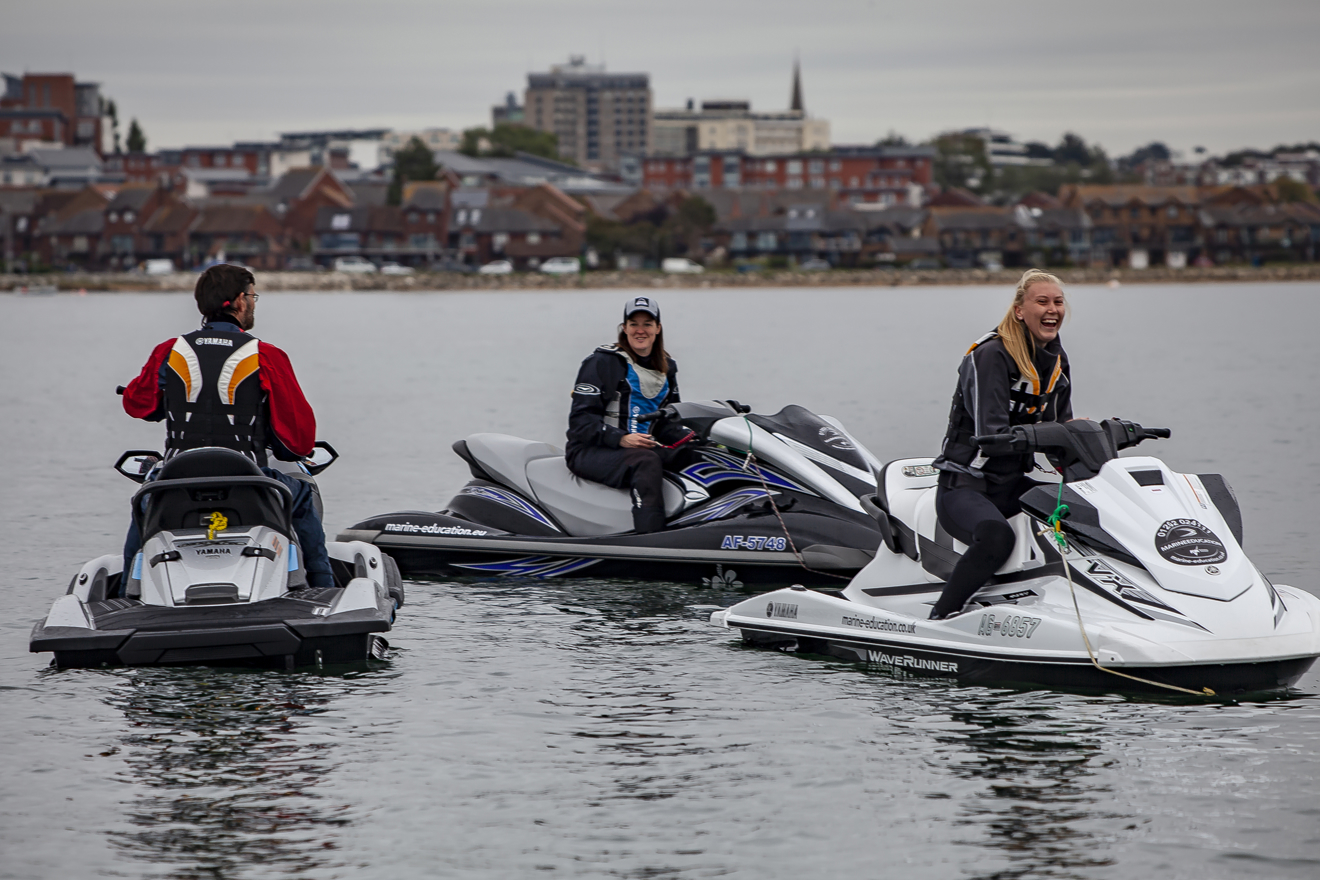Personal watercraft tips
Personal watercraft are not just for holidays, here are our top tips to get you started
For many, personal watercraft (PWCs) are something we’d associate with holidays abroad. But if you’re looking for a new outdoor activity to try a little closer to home, they’re also perfect for exploring our home shores.
RYA personal watercraft instructor and ambassador for the Personal Watercraft Partnership (PWP), Scott Beelend, explains what’s to love about PWCs, sharing tips for getting started and riding responsibly.
Why choose a PWC?
Personal watercrafts, commonly referred to as a ‘Jet skis’ can be fun and exhilarating way to explore the water. They are small, lightweight, and easily manoeuvrable, meaning you can access many areas that larger crafts can’t. Their small size also allows for easy storage in your garage at home, as well as easy towing, launching, and recovering.
A brand new PWC can be bought for around £6,000 on a trailer. Of course, you can spend significantly more if you want a high-performance model with all the bells and whistles. But on the other hand, there are plenty of older, used PWCs available for a few thousand pounds, so there really is a PWC for everyone.

Finding the right kit
There’s a huge choice of ride wear and equipment on the market, but what do you really need? The UK’s temperate climate and coastal conditions can be prone to frequent changes. Therefore, having the right gear to ensure you’re both warm and protected is essential:
Buoyancy aid or impact jacket: This is an absolute must! If you fall off your PW, you need to be able to float. Never ride without wearing one.
Wetsuit: There are different styles and thicknesses available, from lightweight short summer suits to full length thicker winter suits.
Footwear: Anything from a pair of trainers, to purpose designed riding shoes or boots, can make for better grip on your PW and more comfort on that lunchtime walk to the chip shop.
Gloves: A pair of gloves will keep your hands warm and give a better grip on your handlebars for better control of your PW.
Hat: A neoprene hat will stop you loosing heat through your head and will protect you from the sun.
Eyewear: Salt spray and wind can make it difficult to maintain a clear lookout while riding. A pair of glasses or goggles will make a big difference, just make sure they float!
Safety kit: At a basic level you should always carry a tow rope, an anchor, a whistle, some distress flares, and a knife to cut you free of any debris.
Communications: At the very least, make sure you have a mobile phone. A VHF handheld radio is better, but you’ll need an operator’s license to use it legally. If your VHF isn’t DSC capable, you can carry a PLB (Personal Locator Beacon) so that your location can be pinpointed in an emergency.
Sustenance: It’s always a good idea to carry snacks and drinks to stay hydrated.
Spares: A spare set of spark plugs and a tool to change them could get you out of needing a long tow back to shore.
Get trained
Modern PWCs are capable of speeds in excess of 60mph in the blink of an eye. However, with great fun comes great responsibility.
The RYA Personal Watercraft Proficiency course is an affordable, one-day training course, teaching you how to ride a PWC safely and responsibly. You’ll also cover the basic skills of navigation and the rules of the road at sea.
Those taking the course will also be provided a copy of the RYA Personal Watercraft Handbook. Packed with information and advice on everything from pre-launch checks and passage planning to offshore cruising and legal requirements.
Location, location, location
Many areas of the UK have local registration systems for PWCs, available at a fairly reasonable cost. You’ll need to sign up to be allowed to launch and ride in your chosen location.
Unfortunately, there isn’t a national scheme in operation, so you may need to pay for additional registrations if you want to launch in different areas.
Many local councils also set minimum rider ages and require RYA qualifications to get afloat.

Insure you’re covered
Depending on the age and model you select, a PWC can cost up to £18,000 to buy new. You wouldn’t drive a car without being insured, so you really shouldn’t be doing it on your PWC either. Many harbour authorities and local councils will also require you to have insurance.
As well as protecting against theft, you’ll also be covered should you damage your craft. Many policies also offer public liability insurance, should you be unfortunate enough to need it.
Safety in numbers
Riding with a group means you have help and support should you break down at sea or fall off your craft and find you can’t get back on.
There are a number of fantastic PWC clubs and groups around the country that are easy to join. Alongside the obvious benefit of finding riding buddies, you’ll also be shown around the area by experienced, responsible riders. You’ll also gain access to information and advice about areas to avoid, local regulations and must-see spots.

Always ride responsibly
PWC riders are not always seen in the best light and an irresponsible minority can be the subject of bad press. Riding with an established, responsible club or group can help ensure you don’t fuel any negative comments.
If you do end up going it alone without the support of a club, there are a few key things to remember:
- Do your research on local regulations and licensing requirements
- Check the forecast and tides
- Passage plan
- Carry the correct gear and a means to call for help
- Stick to any speed limits and stay out of any exclusion zones
- Respect others, both on and off the water
- Respect the Marine Code that protects marine life
- Never ride solo, always take a buddy
- Always let a friend or family member know where you’re going and when you’re back on shore. Consider using the free RYA SafeTrx app to help with this.

Find out more
The RYA and Personal Watercraft Partnership have great resources available online to get you up and running, and to help you find a local club or group.
The RNLI also have some helpful information and advice regarding safety at sea and safe PWC use.
Riding a PWC is a great way of getting out on the water. Doing it safely and responsibly makes it much more fun for everyone afloat.
Find out more about RYA training courses or to find a centre near you.
